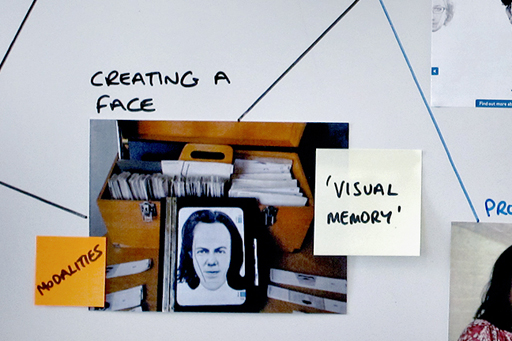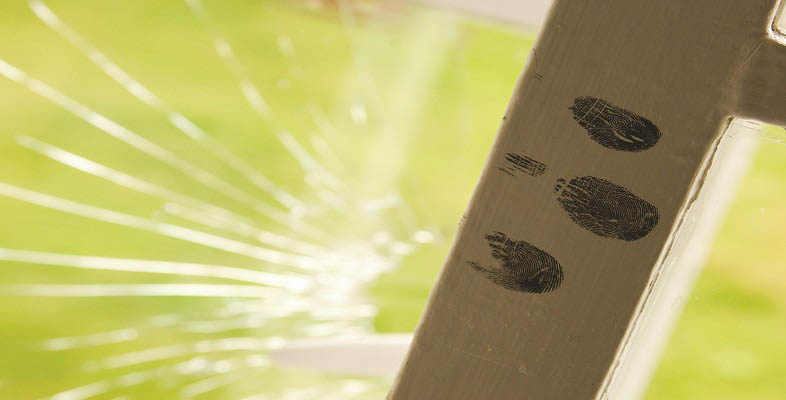1.2 Creating a face

Our memory of a face is a ‘visual memory’ that we must translate into a verbal description when asked to describe a face. Then someone else has to compare our verbal description to their visual memories. Switching between these different ‘modalities’ is difficult to do.
Given the problems with verbal descriptions, and to assist in the process of translating the witness’s visual memory of the perpetrator’s face into a visual image that can be used to find a suspect, the police have employed artists to create a pictorial representation.
In the early 1970s, a package known as ‘PhotoFIT’, which someone without artistic skills could use, became available. This system, shown in the image above, comprised numerous black-and-white prints of facial features (hairlines/ears, eyes/eyebrows, nose, mouth and chin/cheeks). Based on their verbal description, the witnesses would be shown a choice of such features and asked to select the ones that best represented those of the perpetrator. The selected photographed features were then physically blended together, as in a collage.
Research showed that the images produced tended not to be a good likeness of the target face. Psychologists suggested this was because the construction process involved selecting individual features, and the human mind does not remember faces as a collection of features, but instead represents faces ‘holistically’, i.e. the whole face is stored in memory.
